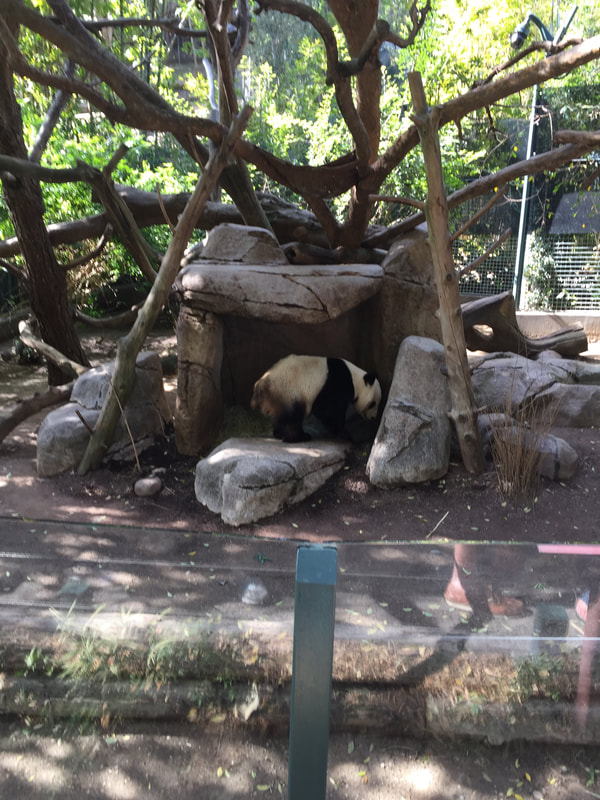|
Over the years I’ve often traveled alone for work, conferences, or events, or to join friends or family. My recent San Diego week was different, a medicinal dose of outdoor rambles free from fear of falling on ice.
Much as I enjoy shared vacations, solo travel turns out to have benefits. Two restaurants seated me immediately while couples waited for larger tables to clear. One friend told me she’d love to move, rest, or eat as the spirit moved, without the need to consult a companion. Another said, “I think we, as women, take it on ourselves to try to make sure things go well for everyone. Traveling alone, when something goes wrong we can just relax and deal with it. We haven’t let anyone down.” Fake Flamenco blogger Rebecca Cuningham writes of gaining life confidence as a solo traveler at twenty. While this may be a coming-of-age phenomenon, it can recur any time resilience starts to flag. Now I’m glad to be home revived, spring has melted the ice, and the writing that stalled amid February’s winter blues has finally started to flow.
2 Comments
My boyfriend at high school summer camp in Massachusetts turned out to have played with my brother when they were five-year-old neighbors in Kansas. Some years later, as I stood forlorn in Honolulu after my husband boarded his flight for Vietnam, a young man in Air Force uniform called my name; our families were shirttail relatives who visited in Pittsburgh when he and I were kids. In real life, coincidences happen.
Why not in fiction, then? Because fiction isn’t like life. Stories demand a logical progression of cause and effect, leading to climax and resolution. Real life is less shapely. A lot of life just happens, including the occasional odd happenstance we wouldn’t tolerate from an author. This guideline comes from Emma Coates in Pixar’s 22 Rules of Storytelling: “Coincidences that get characters into trouble are great. Coincidences that get them out of it are cheating.” Maps have fascinated me since childhood. Globes, aerial photographs, choreographic floor plans, house blueprints, graphic organizers, apps that show you the driver approaching your house—lay it out for me spatially and you have me hooked.
So my first question after checking into my San Diego hotel last week, on respite from the polar vortex, was, “Which way is north?” The answer, together with the maps I’d pored over in advance, let me roam with confidence by foot, bus, and trolley. Two-dimensional maps didn’t prepare me for the wonders of Balboa Park. A walkway in the Japanese Friendship Garden descends by switchbacks to the pond in this photo, far below the entrance. The Palm Garden nestles in another canyon across the road. A visit to the panda began with a long outdoor elevator ride into the depths of the zoo. To relish the third dimension, sometimes you have to be there. Lately I’ve been working on an Afghanistan chapter for the next volume of Rotary and the Gift of a Polio-Free World. It’s sobering stuff. Afghanistan led the world in children paralyzed by polio last year, in part because of threats against workers who tried to deliver vaccine. Across the border in Pakistan, more than a hundred vaccinators and their guards have been murdered over the past five years. Immunizing children can be dangerous work.
The dangers are different in the United States. Measles infected more than a hundred people here in the past two months, mostly in places where a critical mass of parents fear vaccination. Measles vaccine can’t be given to those the vaccine most endangers: infants below age one, pregnant women, and people with compromised immune systems. Unprotected, they’re at high risk of infection in any public space where someone with measles coughed or sneezed in the last hour or two. They're safest in a community where the children around them are vaccinated. For historical perspective, measles caused 450 to 500 deaths a year in the United States before the introduction of vaccine. Globally, measles and its complications still kill more than 100,000 people a year, mostly children below age five. Unwitting travelers—eighty-one of them in 2018 alone—bring the virus back to the United States. |
AuthorI'm a historian who writes novels and literary nonfiction. My home base is Madison, Wisconsin. Archives
July 2024
|


 RSS Feed
RSS Feed